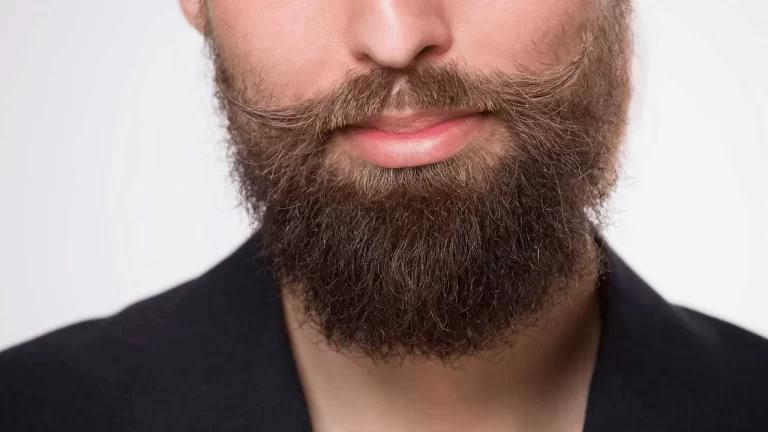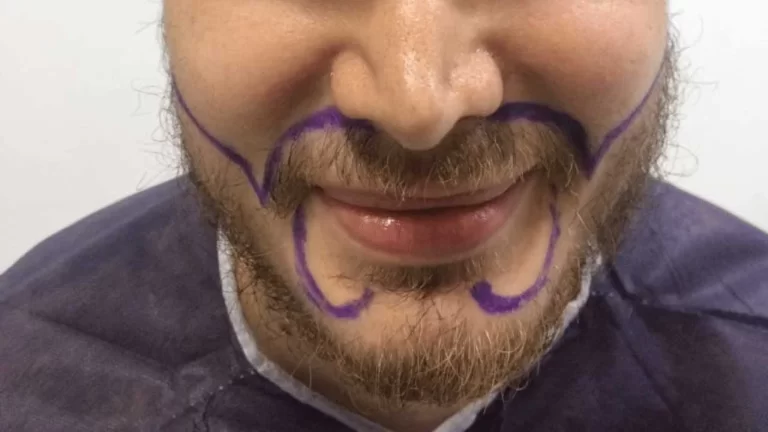Having a full and thick beard is often associated with masculinity, confidence, and style. However, not everyone is blessed with a naturally robust beard.
If you find yourself longing for a fuller and more aesthetically pleasing beard, you're not alone. In recent years, the popularity of beard transplants has surged, offering a viable solution for those seeking to enhance their facial hair.
In this comprehensive guide, we will delve into the world of beard transplants, exploring the procedure, benefits, potential risks, and everything you need to know to make an informed decision. Let's embark on this transformative journey to unlock your true beard potential!

What is Beard Transplant?
A beard transplant is a surgical procedure that involves harvesting hair follicles from a donor area, typically the back of the scalp, and transplanting them to the desired area of the beard. This intricate process allows individuals with sparse or patchy facial hair to achieve a fuller, more defined beard.
The Rise of Beard Transplants
In recent years, the popularity of beard transplants has skyrocketed. With the emergence of the "lumbersexual" trend and the increasing societal emphasis on well-groomed facial hair, more and more men are turning to this procedure to enhance their facial aesthetics. Beard transplants have become a symbol of style, confidence, and self-expression, enabling men to sculpt their facial hair to align with their desired image.
Preparing for Your Beard Transplant
Consultation with a Hair Transplant Specialist
Before diving into the beard transplant journey, it is crucial to schedule a consultation with a reputable hair transplant specialist. During this initial meeting, the specialist will evaluate your specific case, examine the quality and quantity of your donor hair, and discuss your goals and expectations. This consultation is a pivotal step in determining your eligibility for the procedure and designing a personalized treatment plan tailored to your needs.

Understanding the Procedure
While each beard transplant procedure may vary slightly depending on the individual, there are some general steps involved:
Anesthesia: Before commencing the procedure, the donor area and the recipient area will be anesthetized to ensure your comfort throughout the process. The type of anesthesia used will be discussed with you during your consultation.
Donor Hair Extraction: The hair follicles are carefully extracted from the donor area, usually the back of the scalp. This area is chosen because the hair is genetically programmed to be more resistant to hair loss, ensuring the long-term success of the transplant.
Recipient Site Creation: Tiny incisions are made in the beard area, where the extracted hair follicles will be implanted. The surgeon's artistic skills and expertise play a vital role in creating natural-looking results that blend seamlessly with your existing facial hair.
Hair Follicle Implantation: The harvested hair follicles are meticulously implanted into the recipient sites. The surgeon pays close attention to the angle, direction, and density of the transplanted hair to ensure a natural appearance.

Post-Procedure Care and Recovery
After your beard transplant, it is essential to follow the post-procedure care instructions provided by your surgeon. This typically includes:
Medication: Your surgeon may prescribe antibiotics or other medications to prevent infection and promote proper healing.
Avoiding Physical Activity: Strenuous activities and exercise should be avoided for at least a week after the procedure to minimize the risk of dislodging the transplanted hair follicles.
Gentle Cleansing: You will be advised on how to gently cleanse the transplanted area to keep it clean and free from debris.
Avoiding Sun Exposure: Direct sunlight can be harmful to the newly transplanted hair follicles. It is important to protect your face from prolonged sun exposure by wearing a hat or using sunscreen with a high SPF.
Patience and Time: It is crucial to remember that the results of a beard transplant are not instant. It takes time for the transplanted hair follicles to establish themselves and begin growing. It is common to experience some shedding of the transplanted hair in the weeks following the procedure. However, after a few months, new hair growth will start, and you will gradually notice the transformation of your beard.
Beard Transplant Turkey Before and After

BEFORE

AFTER
Benefits of Beard Transplants
Achieve a Fuller Beard: The primary benefit of a beard transplant is the ability to achieve a fuller, more robust beard. Whether you have thin or patchy facial hair, a transplant can fill in the gaps and create a denser appearance.
Enhance Facial Aesthetics: A well-groomed and properly shaped beard can significantly enhance your facial aesthetics. A beard transplant allows you to sculpt your beard to complement your facial features and create a more balanced and attractive look.
Boost Confidence and Self-Esteem: For many individuals, a beard is more than just facial hair; it is a symbol of masculinity, identity, and self-expression. By attaining the beard of your dreams, you can boost your confidence and improve your overall self-esteem.
Minimally Invasive Procedure: Beard transplants are generally considered minimally invasive, especially compared to other surgical procedures. The recovery time is relatively short, and the risk of complications is minimal when performed by a skilled and experienced surgeon.
Understanding the Potential Risks and Considerations
Scarring: While advancements in technology have significantly reduced the risk of visible scarring, it is important to note that scarring is a potential risk associated with any surgical procedure. However, with proper post-operative care and the expertise of a skilled surgeon, scarring can be minimized and often becomes virtually undetectable.
Infection: Like any surgical procedure, there is a risk of infection. However, by following your surgeon's post-operative care instructions, keeping the treated area clean, and taking any prescribed medications, you can greatly reduce the risk of infection.
Shock Loss: It is common to experience a temporary shedding of the transplanted hair in the weeks following the procedure. This is known as "shock loss" and is a natural part of the hair growth cycle. However, the transplanted hair follicles will eventually regrow, and new hair growth will occur.
Cost Considerations: Beard transplants can be a significant investment, and the cost can vary depending on various factors such as the extent of the transplant, the expertise of the surgeon, and the geographic location. It is important to consider the cost alongside the potential benefits and long-term satisfaction that a fuller beard can bring.
FAQs about Beard Transplants
Can anyone get a beard transplant?
Yes, in general, anyone with thin or patchy facial hair can be a candidate for a beard transplant. However, it is crucial to undergo a consultation with a qualified hair transplant specialist to determine your eligibility and discuss your specific case.
How long does a beard transplant procedure take?
The duration of the procedure can vary depending on the extent of the transplant and the individual case. On average, a beard transplant can take between 2 to 6 hours.
Will the transplanted hair look natural?
Yes, when performed by a skilled and experienced surgeon, the transplanted hair will look natural and blend seamlessly with your existing facial hair.
Is the procedure painful?
Local anesthesia is used during the procedure to ensure your comfort during the beard transplant procedure, so you should not experience any pain. However, it is common to feel some discomfort or mild soreness in the days following the procedure. Your surgeon may prescribe pain medication or recommend over-the-counter pain relievers to manage any post-operative discomfort.
Are there any long-term side effects of a beard transplant?
When performed by a skilled and experienced surgeon, a beard transplant is generally safe and does not have any significant long-term side effects. However, it is important to follow post-operative care instructions and attend follow-up appointments to ensure proper healing and monitor the progress of your transplant.
How long does it take to see the final results?
The final results of a beard transplant can vary from person to person. It typically takes several months for the transplanted hair follicles to establish themselves and start growing. By around six to nine months, you should start noticing significant hair growth and see the final results of your beard transplant.

